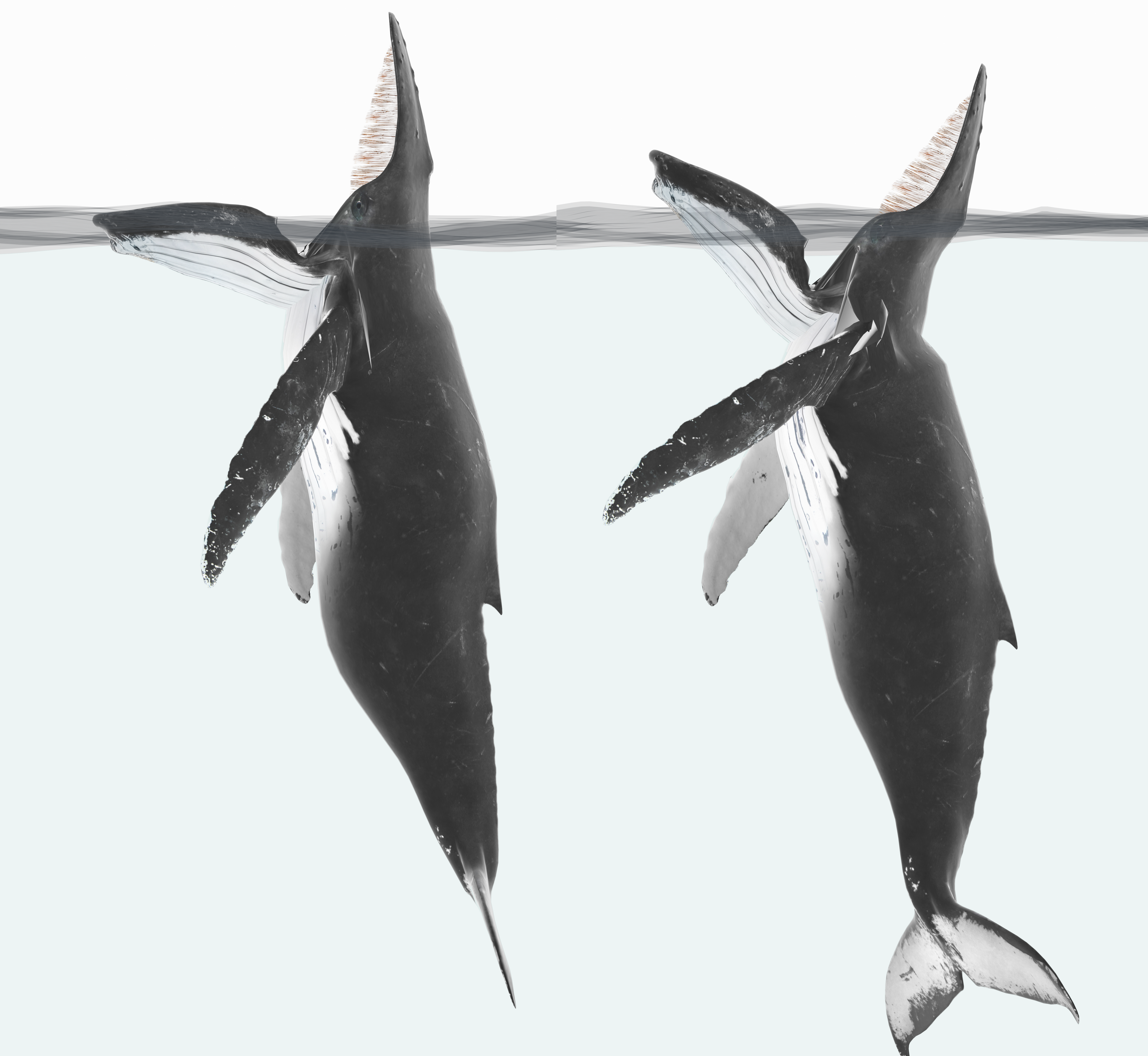In 2018 a whale behavior was filmed for the first time off eastern Canada. Instead of lunging after fish, the humpback whales stayed nearly motionless while opening their mouths wide and letting the fish come to them. Interest from marine biologists turned to astonishment when the same behavior was described among Bryde’s whales in the Gulf of Thailand, quickly going viral. Other accounts have since poured in, raising the question of whether we had somehow missed this technique all along, or if something had changed, and if so what.
Officially this approach, named trap or tread-water feeding, had never been reported before 2014, despite millions of hours spent watching the two species. However, Dr John McCarthy of Flinders University thinks that might be wrong. He has found detailed descriptions of what seems to be the same activity in the most unlikely of places: a 13th-century Norse manuscript. Shorter accounts that also appear to refer to the same thing date back almost two millennia.
In a new paper, McCarthy and colleagues present the argument that trap-feeding was actually once common enough that observant sailors reported it several times in the past.
“I saw the video footage,” McCarthy told IFLScience. Subsequently, he read a description of whale behavior in medieval Norse writing and “saw a parallel”. Norse tales of the sea refer to a creature called a hafgufa – often confused with the Kraken (which is Norse, not Greek) – which is considered a mythological beast. However, while researching McCarthy noted that in works such as The King’s Mirror, the hafgufa is explicitly referred to as a type of whale that feeds by waiting for fish to swim into its mouth.
Diagram of humpbacks engaged in trap feeding; with a jaw either flush with the waterline, or raised to a similar height to the rostrum (J. McCarthy)
The King’s Mirror’s description of the hafgufa is clearly exaggerated and the author proposes there are only two of them in the entire ocean. However, the other aspects could be a modern description of trap feeding. The King’s Mirror has been found to contain a remarkably accurate account of at least 26 other animal species, so there is reason to take it seriously.
On looking deeper McCarthy discovered the more fantastical hafgufa references are later additions, from the 18th century. Those, like The King’s Mirror that date from Medieval times, consistently fit well with the behavior seen in recent years.
An illustration of the hafgufa from the Icelandic Physiologus (c.1200) depiction of the Apsido feeding (Reykjavík AM 673 a II 4to fol. 3v Public Domain, color and contrast corrected).
Moreover, the Norse were not the first to report the phenomenon. A Greek text attributed to Physiologus and thought to have been written in Alexandria around 150-200 CE also contained a reference. The original has been lost, but a Latin translation gives a similar description, albeit less specific than the one in The King’s Mirror.
An ancient feeding practice makes more sense than two species of whales independently discovering a new approach in distant oceans. However, it raises the question why either whale species stopped feeding this way for centuries, or nobody noticed despite frequent human-whale interactions in the 20th century.
Both humpbacks and Bryde’s (pronounced brood-es) whales are rorquals, baleen whales that hunt mostly by lunge-feeding. The paper proposes rorquals feed this way only when fish are relatively scarce. Presumably, it takes a lot less energy to float at the surface and open one’s mouth than to actively chase food. That makes it a worthwhile strategy when returns are expected to be poor.
A map of Iceland from 1658, surrounded by mythical creatures – except that one of them might not be so mythical: the hafgufa, enlarged below. Public domain
In the 19th and 20th centuries, industrial-scale whaling drove rorquals almost to extinction. Stocks of their preferred prey were often overharvested as well, but not as drastically. Consequently, the authors suggest, the few whales that survived probably had plenty of food to choose from. They could focus on high-effort/high-reward approaches such as lunge and bubble-net feeding.
If this is true, the return of trap-feeding could be an indicator of the recovery in rorqual numbers, something that is certainly believed to be taking place with humpbacks. Recent reports of humpbacks singing less and a record-breaking pod of fin whales are thought to be signs the recovery among large whales is changing their behaviors, so it’s plausible old hunting techniques are being recovered.
A consistent feature of the ancient accounts of trap feeding is that the whales used smells to lure fish into their mouths. This has not been observed, but the whales sometimes cough up filtered prey beforehand, perhaps as a lure, and the smell is unquestionably strong.
McCarthy told IFLScience the paper’s conclusions could be tested by “Measuring the density and distribution of prey,” where trap feeding is observed, along with investigations of water conditions. Observers may also look out for similar behavior among other species of rorquals. “Hopefully if nothing else [the paper] will inspire more research,” McCarthy said.
The paper is published in Marine Mammal Science.
Source Link: New Whale Behavior May Be Inspiration For Ancient Norse Sea Creature Myth
